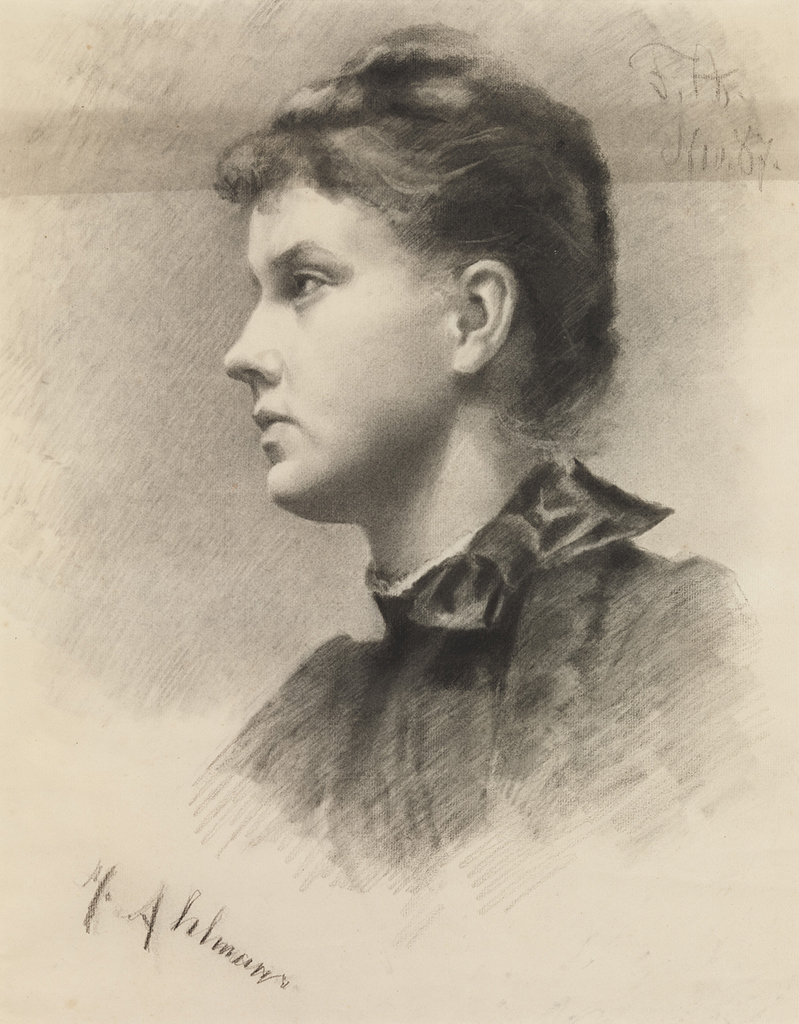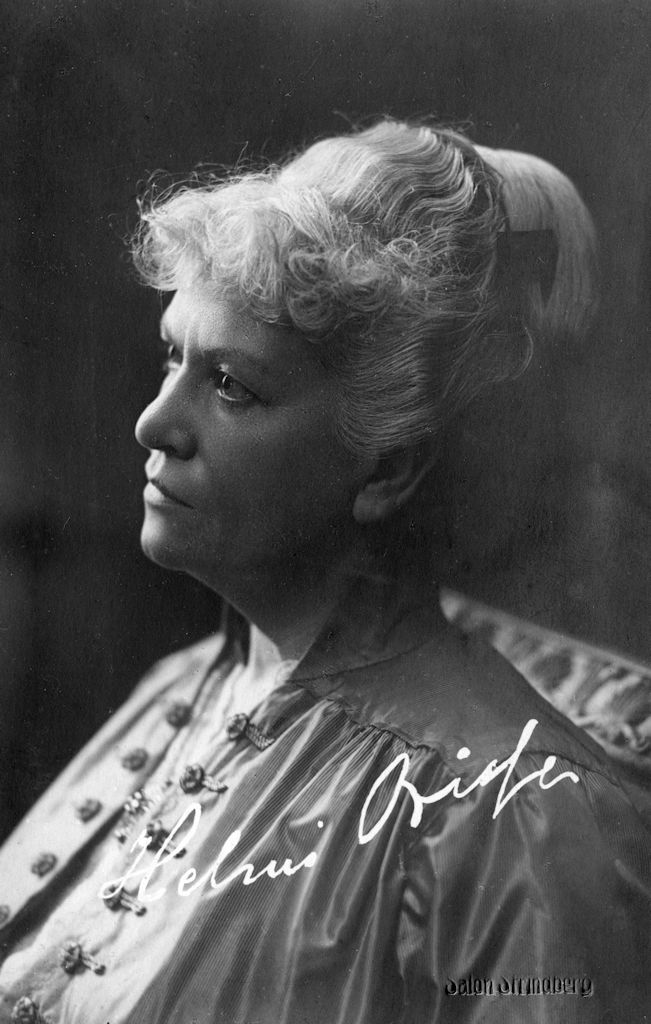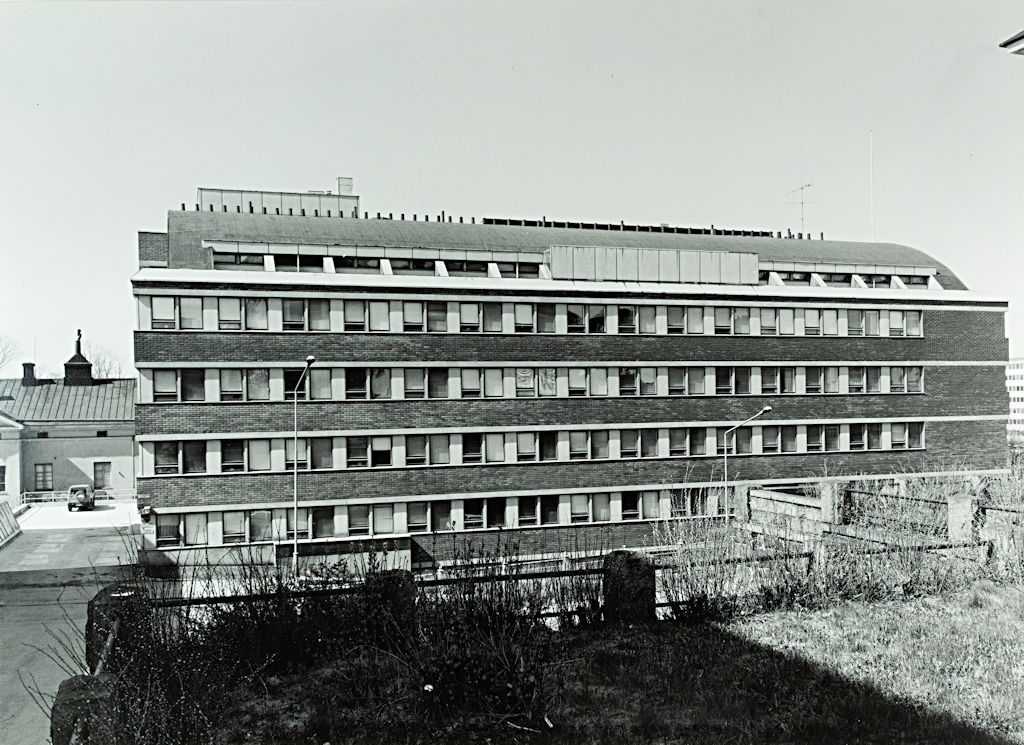In 2015 a painting thought to have been lost was discovered in a cellar space of the University of Helsinki: Helmi Biese’s An Old Pine. But who was the artist, and how did the painting end up in the cellar?

A forgotten artist
Helmi Ahlman (1867–1933) drew from a young age and was encouraged to pursue art by both her parents and Hilda Granstedt, who was a drawing teacher at the Swedish-language girls’ school in Helsinki. Although Ahlman’s parents, who were senior civil servants, urged their children to be creative, they considered a professional career as an artist risky. Helmi Ahlman’s mother wanted her daughter to become a doctor, but she stuck to the visual arts, studying in the elementary class of the Finnish Art Society’s drawing school under Carl Albert Jahn, in the class focused on drawing ancient sculptures under Fredrik Ahlstedt, and in the drawing school’s painting studio under Gunnar Berndtson. To secure her finances, Ahlman completed the qualification of drawing teacher in 1888 at the private academy of Adolf von Becker, a drawing instructor at the Imperial Alexander University.
In the late 1880s Ahlman got engaged to Hjalmar Biese, an accountant she had originally met as a schoolgirl. They were married in 1896, and Ahlman adopted her husband’s surname. Their son Yrjö, their only child, was born in 1903.

Biese’s husband supported her artistic work but, probably for financial reasons, she made a living working not as a painter, but as a teacher. She worked as a drawing instructor at an upper secondary school in Porvoo from 1892 to 1895, an upper secondary school for girls in Oulu from 1896 to 1897, and the Helsinki Craft School from 1898 to 1920 and in the mid-1920s. Biese wrote that she longed to travel ‘across the oceans’ for new stimuli, but was grateful for her domestic life. She made one study trip with her family in 1914 to Sweden and Denmark with the help of a travel grant from the Helsinki Craft School. Towards the end of her career, she stated that she had not had the opportunity to mature as an artist as she had wished.

Helmi Biese is little known by the public, for no obvious reason. As a visitor remarked on a small exhibition of Biese’s works in 1914: “Oddly, Mrs Biese does not have the recognition and reputation that her works deserve. If that painting were by, say, [Albert] Edelfelt, it would fetch a far higher price.” Despite her doubts, Biese held a private exhibition in the Strindberg art salon in 1920 at the age of 53. The exhibition was widely reported on in the press, and the sales income gave her the confidence to temporarily abandon her long-time job as a teacher. However, she returned to teaching from 1922 to 1923 and in 1925, probably for financial reasons. The situation in 1925 was likely also affected by the unexpected death of her beloved spouse.
Capturing the power of nature
Biese’s artistic career coincided with a turning point in landscape painting in the 1880s. Artists were moving from plein-air realism towards an interpretation of nature and a conception of landscape interpreted even as patriotic. In the late 1890s and early 1900s, Biese’s paintings focused on wintry and marine landscapes seen from high above, topics that continued to dominate her later works as well. Biese’s art was considered ‘masculine’ due to her topics and powerful execution. In exhibition reviews, she was compared not only to Fanny Churberg, but also to Väinö Blomstedt and Pekka Halonen.

The Svenska Pressen newspaper wrote about Biese’s commemorative exhibition on 6 March 1935:
“Standing at the top of a hill as the wind shakes the scaffold, the fight to keep the canvas and the brushes with her – this she considered among the happiest tasks of her life. In such work-filled moments, she felt how the excitement or energy become one with the forces of nature and how creation erupted into gratitude for the rich gift of life.”
An Old Pine
Helmi Biese donated the painting An Old Pine to the Helsinki Craft School on its 50th anniversary in 1931. When craft teacher education, alongside other teacher education, was incorporated into the University of Helsinki in 1975, the painting was moved to Helsinginkatu 34 and, later in 2002, to the Aurora building at Siltavuorenpenger.
The painting was discovered thanks to University Lecturer Kirsti Salo-Mattila’s research in the Aurora cellar space in 2015. Because the condition of the painting had deteriorated in the cellar, the Helsinki University Museum had the painting restored in 2016. The restoration was done by Nina Broadstreet, who specialises in the restoration of works of art painted on canvas and wood.

The materials and condition of the painting made its restoration challenging. Biese had painted An Old Pine on a cotton canvas which had been stretched due to fluctuations in temperature and humidity, causing the layer of paint to crack. The painting was also dirty. As part of the restoration, another canvas was added to the back of the painting to prevent further damage, and the painted surface was cleaned. After the renovation of the University of Helsinki’s Main Building was completed in autumn 2021, Helmi Biese’s An Old Pine was placed on display in the Mikael Wexionius facility there.
Many of the key elements of Biese’s art are depicted in this painting: the sea, the sturdy rocks and the tree growing defiantly among the rocks. For Biese, the pine tree represented fortitude, strength and stability: “I like the pine tree because it has huge roots, because it clings so firmly to the surface of the earth and because it is continuously engaged in its own struggle against storms, the sun and the rain.” This description also seems to apply to the artist herself.
Saara Seppälä, guide
Translation: University of Helsinki Language Services
Sources:
Cedercreutz, Emil 1922. “Helmi Biesen näyttely Salon Strindbergissä”. In Helmi Biese. Hämeenlinnan taidemuseon julkaisuja 2/2006. Hämeenlinna: Hämeenlinna Art Museum
Pelin, Anne 2006. “Maisemamaalari Helmi Biese (1867–1933)”. In Helmi Biese. Hämeenlinnan taidemuseon julkaisuja 2/2006. Hämeenlinna: Hämeenlinna Art Museum
Rainio, Päivi 2015. “Helmi Biesen kadoksissa ollut maalaus konservoitiin”. https://www2.helsinki.fi/fi/uutiset/kieli-kulttuuri/helmi-biesen-kadoksissa-ollut-maalaus-konservoitiin (accessed on 1 December 2021)
- “Helmi Bieses minnesutställning”. Svenska Pressen 6 March 1935. https://digi.kansalliskirjasto.fi/sanomalehti/binding/1924570?term=Helmi&term=Bieses&term=Biese&page=4 (accessed on 2 December 2021)
